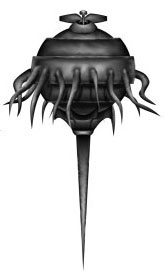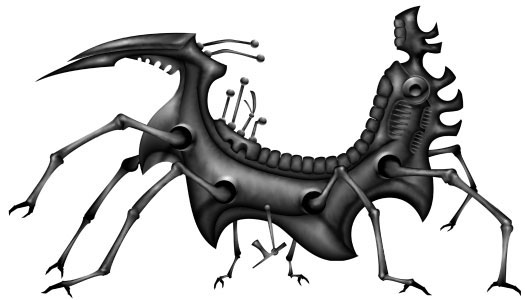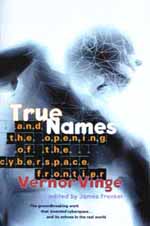I’ve found a lead on the key. Meet me in the alley off Yarrow Street.
This session of In the Shadow of the Spire marks the beginning of Act II of the campaign.
As we’ll see (and be discussing) in the future, Act II is primarily structured around two major threads. Before the first session began, I knew that there would be two triggering events – one for each thread – that would kick off Act II.
The letter the PCs receive at the beginning of this session is one of those triggers: During the period of amnesia which began the campaign, I knew that the PCs had hired someone named Shim to help them find a magical artifact. Despite the PCs no longer being aware of it, the investigation had continued apace and had now yielded results.
The letter acts as an external event: Since the PCs were not interacting with Shim (nor were engaged in any activities which might bring them into Shim’s sphere of influence), I had full control of when Act II would begin and, more importantly, I could build all of the investigations that would sprout from Shim’s contact without needing to really think about how the events of Act I might turn out. The material was, effectively, located behind a firewall.
(This should not be taken to mean that the events of Act I were somehow irrelevant to the events of Act II. In this very session, the PCs are going to make some truly momentous choices that will completely alter how they intersect with the major events of Act II: The situation that’s triggered by Shim’s letter exists behind a firewall; but once the firewall is breached, the PCs and everything surrounding the PCs will begin to interact with it.)
A firewall like this is not necessarily impregnable. We saw an example of this earlier in the campaign when the PCs independently interacted with the Hammersong Vaults and then spontaneously concluded (correctly!) that they may have stored other items of value there during their amnesia. (And we could imagine a similar hypothetical scenario in which the PCs needed the services of someone like Shim, identified Shim as an option, and chose to contact him. Which would have led to a possibly far more interesting – and confusing! – conversation.)
PULLING THE TRIGGER
With a trigger like this in place, how do we know when to put it into play?
You could simply schedule the event: As soon as you know that the trigger is going to happen, you figure out when it should happen and literally place it on the calendar. (A campaign status document is great for this.) This is what I had done with the Hammersong Vaults, for example.
Alternatively, you could mechanically check to see when the trigger occurs. For example, you might make a 1 in 8 random check each day to see if that’s the day Shim finishes his investigation. Or you could set up a progress clock coupled to a mechanical structure for determining when the clock gets ticked.
For a more dramatist bent, you can simply decide when to pull the trigger to best narrative effect. This is largely what I did for the beginning of Act II, with my primary concern being effective macro-pacing: I knew I wanted to space out the two Act II triggers a little bit. I also knew I wanted some crossover with ongoing Act I material so that there was a sense of continuity instead of a sharp discontinuity.
Since Act I wasn’t linear in design, this was not necessarily a straightforward process: There was a bunch of Act I scenarios the PCs never engaged with (and which, as a result, I mostly never prepped) and there were a bunch of other scenarios in Act I that hadn’t been part of the original plan, so I needed to make a judgment call about whether or not certain scenarios had been permanently “written off” and, therefore, how close to the end of Act I we really were.
In practice I also sort of combined methods (which is another valid option): When it was clear that Act I was closing out, I scheduled the trigger for the near future on a specific date. This meant that I wasn’t 100% in control of exactly when or how it might interact with the ongoing activities of the PCs.
Thus begins Act II.
It’s a doozy. Twelve years later, we’re still in the middle of Act II. I’ll almost certainly discuss the reasons for that in a future post.






 You can see that in this session, where Shilukar’s dwindling Intelligence score not only resulted in increasingly muddled decision-making, but also a growing sense of panic as Shilukar felt his mind slipping away from him: In a fantastical equivalent to HAL-9000, you have a character getting more and more desperate to solve a problem as it becomes more and more impossible for them to figure out how to do so.
You can see that in this session, where Shilukar’s dwindling Intelligence score not only resulted in increasingly muddled decision-making, but also a growing sense of panic as Shilukar felt his mind slipping away from him: In a fantastical equivalent to HAL-9000, you have a character getting more and more desperate to solve a problem as it becomes more and more impossible for them to figure out how to do so.










